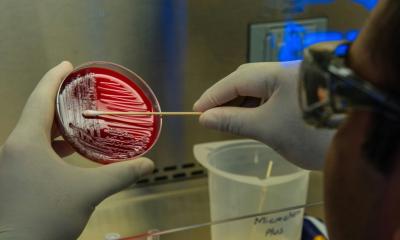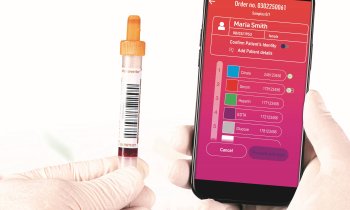Study
Surveying discrepancies
A limited survey of patients who died soon after being discharged from hospital found that almost a quarter had an undiagnosed co-morbidity with a potentially avoidable cause of death.
Report: Frank Swain

Lukasz Adamczyk, a pathologist in training at Southmead Hospital, Bristol, UK, and his colleagues looked at 8,971 adult deaths recorded in the Bristol area between 2012 and 2013, focusing on 123 patients who passed away within 30 days of being discharged from hospital. From the available information they found that, in almost 25% of cases, there was a major discrepancy between the clinical diagnosis recorded on the discharge summary and the findings of an autopsy.
The data was drawn from several locations, as autopsies in the region are conducted in a central mortuary. In addition to the two main hospitals in Bristol, deaths in the community that fell onto other hospitals in the wider Avon area were included. In the majority of cases, death was directly related to previously recorded risk factors, or the cause of most recent hospital admission – nearly half of the patients studied were over 80. In 38% of cases, some discrepancy was discovered between the clinical notes and the results of an autopsy.
‘The main finding is that, in our cohort, where patients die within the 30 days of discharge the majority of cases are in full agreement between what the clinicians have diagnosed and what was found in the autopsy,’ commented Adamczyk, noting that malignant diseases were rarely missed.
‘Our findings broadly reflect what is already recorded in the literature,’ he added. ‘About thirty percent of the time, there’s a mismatch between what the pathologists says and what the clinician says, which has been studied and meta-analysed for quite a few years now.’
Why these discrepancies occur is very difficult to assess, Adamczyk explained. ‘This is the first such survey, and our goal was to determine the proportion of discrepancies and to subtype them. Finding out the cause of discrepancies would need a more extensive study.’ He pointed out that at the time of autopsy, a full background medical history of the deceased might not be available. Often it is also not included in the discharge summaries. Cases such as these are more challenging to correlate.
‘The interesting finding is the 25% figure. If those people had received different treatment, knowing what the pathologist knew, it would have changed their outcome.’
‘It’s seems like a big number,’ admitted Adamczyk. ‘But overall it’s a very small proportion of patients.’ Nonetheless, Adamczyk emphasised the importance of carrying out autopsies whenever there is doubt over the cause of death.
Adamczyk said the study would have to be carried out within a much larger cohort of patients before stating specific conclusions, but highlighted the importance of providing the pathologist with the full medical history. ‘A relatively small proportion of patients die after being discharged, and autopsy confirms clinical diagnosis, these are the main features here. Further studies are required to determine why some diagnoses are missed.’
Profile:
Lukasz Adamczyk MD is a specialist trainee in histopathology. He works in the Department of Cellular Pathology at the Southmead Hospital in Bristol, UK. Adamczyk graduated the Medical University of Gdańsk, Poland, in June 2007. His current research is on ‘Large cell neuroendocrine carcinoma of the urinary bladder – a morphometric, clinicopathological and immunohistochemical study focusing on a large-cell subtype’. He is a member of Royal College of Pathologists, the British Division of the International Academy of Pathology and Pathological Society of Great Britain and Ireland.
27.11.2014











